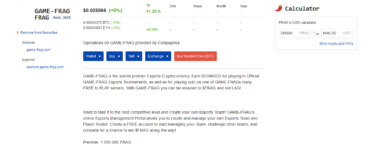Within the fast-paced world of Forex trading, where split-second selections can make or break fortunes, the emergence of automated trading systems (ATS) has reshaped the landscape. These systems, driven by algorithms and executed by computers, promise effectivity, speed, and emotion-free trading. Nonetheless, like any technological innovation, they come with their own set of advantages and drawbacks. In this article, we delve into the pros and cons of automated trading systems for Forex traders.
Pros:
Speed and Effectivity: One of the vital significant advantages of ATS is their speed. They can execute trades in milliseconds, far quicker than any human trader could. This speedy execution is crucial in Forex markets, the place costs can fluctuate rapidly. Moreover, automated systems can handle a number of trades concurrently, increasing efficiency and permitting traders to capitalize on fleeting opportunities.
Emotion-Free Trading: Emotions typically cloud human judgment, leading to impulsive choices and irrational behavior. Automated trading systems eliminate this factor by executing trades based solely on pre-defined criteria and algorithms. They stick to the plan, regardless of market volatility or external influences, thus reducing the risk of pricey mistakes driven by worry or greed.
Backtesting and Optimization: Earlier than deploying an automatic trading strategy, traders can completely backtest it utilizing historical data. This allows them to assess its performance, determine potential flaws, and optimize parameters for better results. Backtesting provides invaluable insights that may help refine strategies and enhance their robustness, leading to more consistent returns over time.
24/7 Market Monitoring: Forex markets operate around the clock throughout completely different time zones. Monitoring these markets continuously can be physically and mentally exhausting for human traders. Automated systems, however, can analyze market conditions and execute trades at any time of the day or night, guaranteeing that opportunities are not missed even when traders are asleep or occupied with different tasks.
Cons:
Over-Reliance on Technology: While automation presents numerous benefits, it also comes with the risk of over-reliance on technology. Technical glitches, system failures, or connectivity issues can disrupt trading operations and lead to significant losses. Moreover, in the occasion of a black swan occasion or unprecedented market conditions, automated systems might wrestle to adapt, exacerbating losses or amplifying volatility
Lack of Human Judgment: While emotion-free trading is touted as a benefit, it will also be a drawback. Automated systems operate based mostly on predefined rules and algorithms, lacking the intuition and judgment that human traders possess. They may battle to interpret complex market signals, adapt to altering conditions, or factor in qualitative factors that can not be quantified, doubtlessly leading to suboptimal decision-making.
Over-Optimization and Curve Fitting: Through the backtesting and optimization process, there’s a risk of overfitting the trading strategy to data. This phenomenon, known as curve fitting, happens when the strategy performs exceptionally well on past data but fails to deliver comparable leads to live trading. Traders should strike a balance between optimizing their strategies for historical performance and making certain their robustness in real-world conditions.
Market Manipulation and Liquidity Issues: The rise of automated trading has raised issues about market manipulation, particularly in the Forex market, which is decentralized and largely unregulated. High-frequency trading (HFT) algorithms can exacerbate market volatility and lead to flash crashes, impacting liquidity and market stability. Traders must navigate these risks and stay vigilant to avoid being caught off guard by sudden market movements.
In conclusion, automated trading systems supply a host of benefits for Forex traders, including speed, efficiency, and emotion-free trading. Nevertheless, additionally they pose challenges comparable to technological risks, lack of human judgment, and considerations about market manipulation. To harness the full potential of automated trading, traders should strike a balance between leveraging technology and retaining human oversight, while constantly adapting their strategies to evolving market conditions.
If you have any sort of questions regarding where and how you can make use of Forex trading chart patterns, you could contact us at our web-page.

 by jimmiebundy44
by jimmiebundy44





